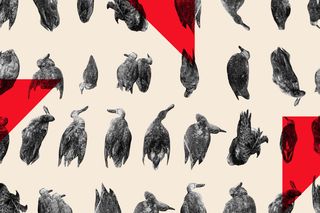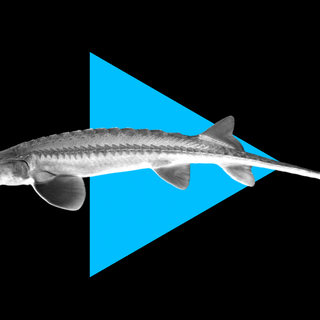
Mass Bird Deaths Are Increasing in Frequency and Magnitude. Why?
Causes range from disease to toxicity to climate change — but all boil down to human activity.

28 dead in Tamil Nadu. 50 dead in Uttarakhand. 500 dead in Kerala. 500 dead in Jharkhand. 1,700 dead in Himachal Pradesh. Thousands dead in Assam. 18,000 dead in Rajasthan.
The numbers are chilling. The numbers are birds. Large-scale die-offs of birds, also known as bird kills, seem to be becoming more common in recent years, and getting larger.
Birds are “a main part of our web of science …. There are so many important contributions they’re giving us,” says wildlife photographer Rathika Ramasamy, who specializes in photographing birds. Birds are the main natural means of controlling insect populations, help pollinate plants, disperse seeds, fertilize soil, and are a source of food for many other animals. There’s a reason why they’re called “our feathered friends,” Rathika adds.
*
“There’s no doubt over the last few years these unusual events are happening — freak weather events, disease pattern events,” says Abdul Jamil Urfi, Ph.D., an associate professor of environmental studies and bird expert at the University of Delhi.
Mass death events are increasing among not only birds but also fish and other marine life, according to a 2015 analysis of 727 die-off studies focusing on nearly 2,500 species over the past 70 years. Most die-offs in the dataset occurred in North America and Europe, and increased reporting of mass animal deaths in recent decades, could have influenced their conclusions, the researchers noted. But even after controlling for such skewing factors, their analysis still showed an increase in the magnitude of such events, as well as an increase in total — roughly one more die-off a year, for the past 70 years.
“Going from one event to 70 each year is a substantial increase, especially given the increased magnitudes of mass mortality events for some of these organisms,” co-lead author Adam Siepielski, an assistant professor of biology at the University of San Diego, said in a statement at the time.
Related on The Swaddle:
Russia Flags World’s First Cases of H5N8 Bird Flu Transmission to Humans
Why this is happening is a more complex question to answer. In India, there is no evidence of a single “shock to the system,” Urfi says.
Rather, Siepielski and team flag a number of long-running problems: disease, human activity, biotoxicity, and climate change. The largest die-offs are precipitated by not just one, but several of these major causes, they found.
But it’s questionable whether these really are such disparate causes. The bird deaths in Tamil Nadu in 2020 were credited to biotoxicity — pesticide poisoning specifically, which is the result of human agricultural activity. Climate change, which makes food scarce and traditional habitats inhospitable for birds, is largely driven by human activities like burning fossil fuels, other air pollution, deforestation, large-scale agriculture, urbanisation, and industrialisation. Human activity is often even behind the threat of disease to birds; the infamous 2019 death of tens of thousands of birds at Rajasthan’s Sambhar Lake was linked to avian botulism – which only flourished because the water had been made toxic from nearby salt industry activity.
The attention-grabbing shock of these events’ magnitude, however, might be disguising a more gradual, insidious problem.
“In India, there seems to be a decline of birds overall,” Urfi says.
Using data crowdsourced from citizen-scientists, a 2020 report titled “State of India’s Birds” determined half of 261 species analysed long-term had declined since 2000; a quarter had declined “strongly.” Among 146 species studied short-term, 80% had declining populations since 2015; half were “declining strongly.” These losses are driven by hunting and trapping as well as human activities that result in compromised habitats and environmental pollution, as untouched ecosystems are disrupted by logging, mining, agriculture, and urban development.
However, the report notes, “For the vast majority of Indian birds, lack of data has hindered a clear understanding of how they are faring. Such an understanding is vital for conservation science, management and policy.”
Related on The Swaddle:
Birds Are Shrinking Because of Climate Change, Study Finds
The Indian findings, limited though they are, reflect a global decline in bird populations, with similar causes — and worrisome consequences.
Ramasamy, who is based in Chennai, has just returned from a trip to Rajasthan’s Bharatpur Bird Sanctuary, an important stopover for nearly 500 species of migratory birds. “Comparing last year to this year, the numbers [there] are less” by thousands, she says. Migratory birds like these help control agricultural pests, help pollinate crops and other plants, and provide food for other wild animals in the area. They are critical, if transitory, parts of the ecosystems in which they stopover.
Also critical were India’s vultures, the population of which dropped by 97-99.9% between 1992 and 2007. It was the fastest decline of any bird population in the world and caused by the birds ingesting the veterinary drug diclofenac via cattle carcasses. The nearly lost species have enabled the spread of rabies and zoonotic diseases, that is, diseases transmitted from animals to humans.
Amid a current global pandemic caused by a zoonotic infection, the loss of birds takes on new urgency.
*
Sometime around 1911, coal miners in Britain began carrying with them a tiny, soft, yellow-feathered bird deep into the dark mine. Worried about poisoning from carbon monoxide — an odorless, colorless, toxic gas that replaces oxygen imperceptibly until dizziness and a mild headache suddenly turn fatal — they needed a means of detecting when the gas was reaching life-threatening levels. The alert would come when the canary, much more sensitive to the toxic gas than humans, died. At that point, miners would hustle out of the mine shaft to escape the tainted air, lest they die next.
Mass bird deaths may not be the major force behind declining bird populations, but they could be our collective canary in a coal mine: an undeniable representation of a natural world turned increasingly hostile by human activity — and one that is quickly catching up with us.
Liesl Goecker is The Swaddle's managing editor.
Related


Delhi Govt Directs Schools to Sensitize Students, Parents About Cyberbullying
